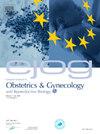Artificial womb technology – A more physiologic solution to treating extreme prematurity
IF 1.5
Q3 OBSTETRICS & GYNECOLOGY
European Journal of Obstetrics and Gynecology and Reproductive Biology: X
Pub Date : 2024-12-15
DOI:10.1016/j.eurox.2024.100359
引用次数: 0
Abstract
Treatment of extreme premature infants (EPI) is limited by developmental immaturity primarily of the lung. A paradigm shift towards a more physiologic treatment of EPI as fetal neonates or fetonates, by keeping them in a womb-like environment to allow continued organ maturation, is the rationale for artificial womb technology. In this review, we discuss the artificial placenta and womb technology, it’s rationale, the history of its development, the most recent preclinical models described in the literature and finally pertinent ethical considerations.
人工子宫技术——一种治疗极端早产的更生理性的解决方案。
极端早产儿(EPI)的治疗主要受到肺发育不成熟的限制。人工子宫技术的基本原理是将EPI作为胎儿新生儿或胎儿进行更生理的治疗,通过将其保持在子宫样环境中以允许器官持续成熟。在本文中,我们讨论了人工胎盘和子宫技术,它的基本原理,它的发展历史,最新的临床前模型在文献中描述,最后相关的伦理考虑。
本文章由计算机程序翻译,如有差异,请以英文原文为准。
求助全文
约1分钟内获得全文
求助全文
来源期刊

European Journal of Obstetrics and Gynecology and Reproductive Biology: X
Medicine-Obstetrics and Gynecology
CiteScore
2.20
自引率
0.00%
发文量
31
审稿时长
58 days
 求助内容:
求助内容: 应助结果提醒方式:
应助结果提醒方式:


